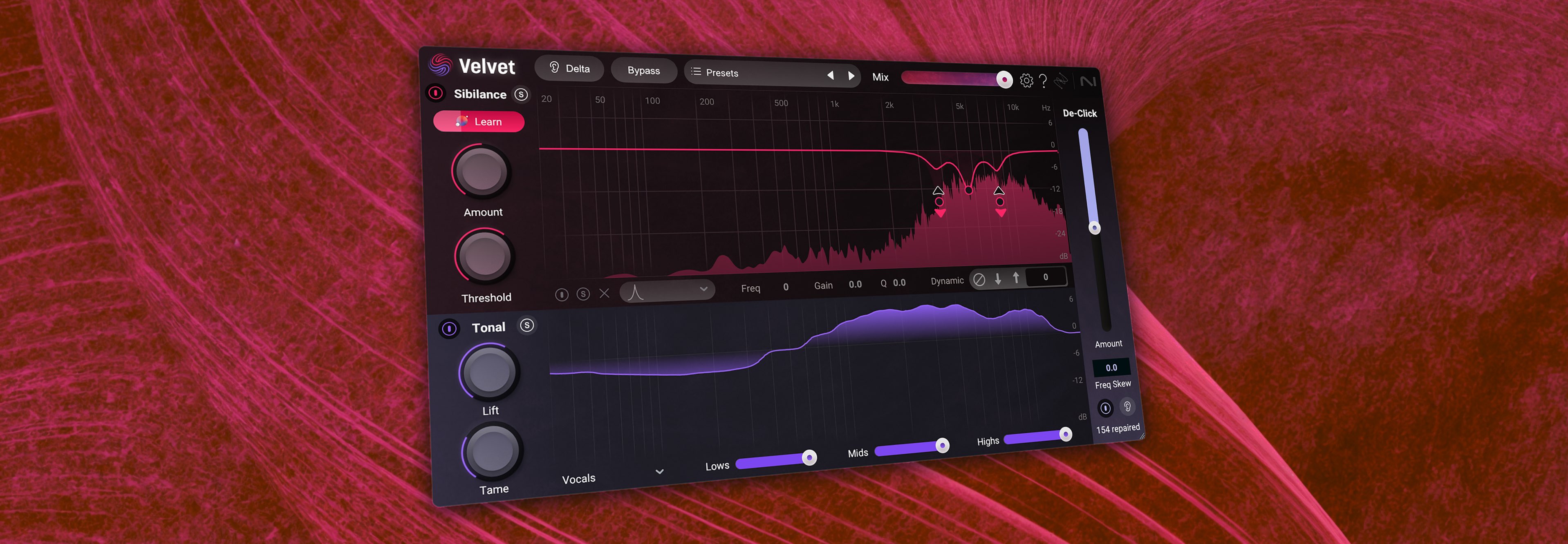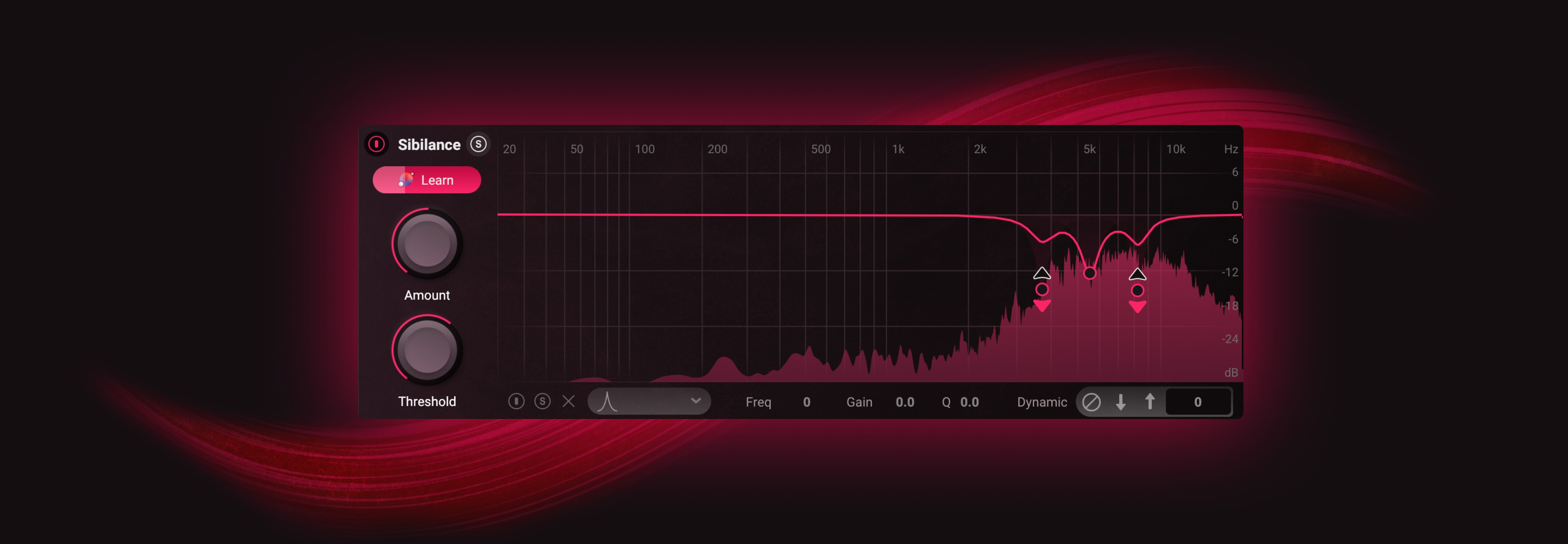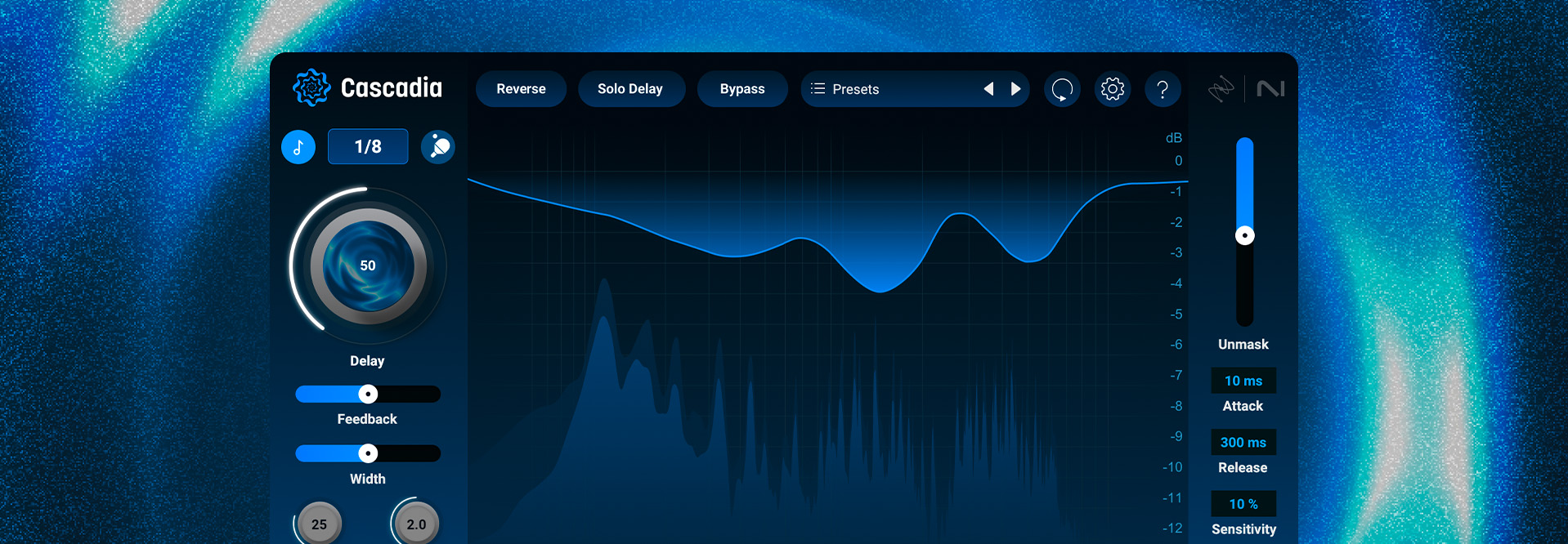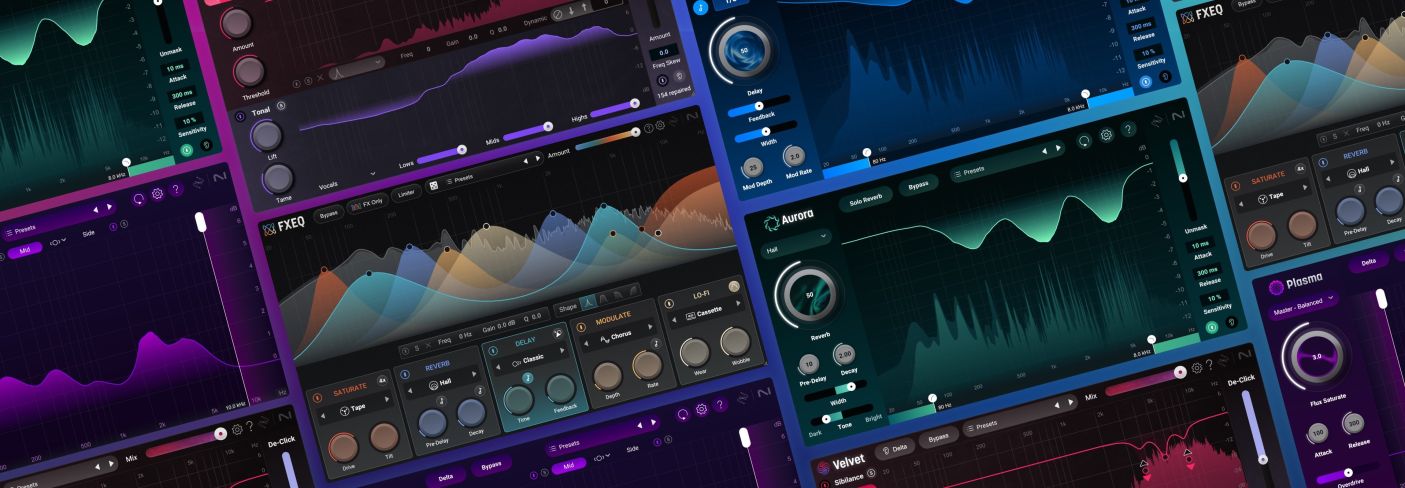
Exploring Catalyst series plugins from iZotope
Explore the iZotope Catalyst Series – five powerful plugins that deliver intelligent multi-effects processing, de-essing, reverb, saturation, and delay to your mixes with easy-to-use features.
Aurora, Plasma, Cascadia, Velvet, and now FXEQ are small, streamlined plugins that differ from the channel-strip layouts of Ozone, Neutron, and Nectar. These tools bring intelligent reverb, saturation, delay, de-essing, and multi-effects in the form of the Catalyst Series.
In this article, we’re going to talk all about the Catalyst Series – what it is, who it’s aimed for, and why each Catalyst plugin is a breath of fresh air for your mixes.
Introducing FXEQ: the EQ that paints effects into your sound
FXEQ is a forward-thinking multi-effects processor that asks a simple question: what if you could use the interface of a conventional EQ to control reverb, delay, modulation, distortion, or lo-fi texture?
Why is this tool so special? Because it offers a new creative way to introduce effects into your mix, and it also affords mixers with a simplified way of dealing with common practical problems:
You might love saturation, but too much of it in the wrong frequency range can make a harsh mess out your mix. The same goes for reverb too. What newbie hasn’t suffered the consequences of a reverb that emphasizes low-mid bloat? That’s why so many people use EQ before and after reverb, building such plugins into their templates, or prioritizing reverbs that have pre- and post-reverb filtering built-in.
Such approaches are necessary to getting the best mix possible – but they are not quickly actionable, certainly not as much so as the interface FXEQ offers.
Observe this vocal, offered here dry:
This is a common example of a good vocal take – but a perfectly serviceable recording done in a home studio. The dynamic mic used here is good for minimizing room reflections, but it adds a pinched quality. We’ve also got exaggerated sibilance from the mic as well.
Also, we’ve got common creative concerns: the vocal has no reverb or delay (granted I’m only presenting it in solo, but let’s suspend that particular disbelief).
Watch what I’ll do in this video with one tool – FXEQ.
We added a nice reverb and delay that stays out of the brightness – that’s the creative part. But here we’ve also used unconventional tools to mitigate the tonal issues as well. Using the tape saturation in the midrange effectively changed the tonal balance to draw our attention a way from that pinched nasally quality.
And what did adding cassette-like flutter and wear do? Look at where we placed it: right in the sibilance range. We effectively blurred the esses – made them less sharp – with this kind of processing.
FXEQ lets you do these things with subtlety or with a heavy hand. It also has an FX ONLY button for bus processing, and a limiter if you need one. All in all a wonderfully simple – yet powerful – tool.
Meet the original Catalysts
More Catalyst Series plugins are on the horizon, and there are a number of them available now.
Velvet, the smart de-esser plugin
The newest Catalyst is Velvet, is a smarter de-esser designed to give you smoother vocals. This plugin addresses common vocal issues by intelligently splitting your audio into separate Sibilance and Tonal channels.
When it comes to de-essing, Velvet offers a combination of forward-facing technology and already-proven features. Controls like Threshold and Amount are on hand, and these are relatively self-explanatory.
Still, here’s a basic run down: Threshold dictates the level at which gain reduction will be applied to the signal, while “amount” is the amount of gain reduction Velvet will provide. Speed controls are automated, as is the case in most de-essers.
More new to the scene (but quite on-brand for iZotope) is the prominent Learn button.
Loop a sibilated area of audio, hit learn, and the plugin will do several things at once.
First, it will analyze your audio and generate a sibilance profile that it uses as a sidechain for the clickable bands (more on these later). Secondly, in default settings, it will intelligently set two narrow parametric bands in your signal path, with each cut targeting a specific sibilant offender. Lastly, it will set a starting threshold for the onset of de-essing.
This Learn button is designed to speed up the de-essing process, and it does so quite effectively.
Once you have the signal learned, you can click in parametric or shelving bands as you can with any modern drag-and-drop EQ. The bands can be static – like a typical EQ – but by default, the respond to the sidechain signal and act like a de-esser.
Each band also has its own “mini-threshold” control.
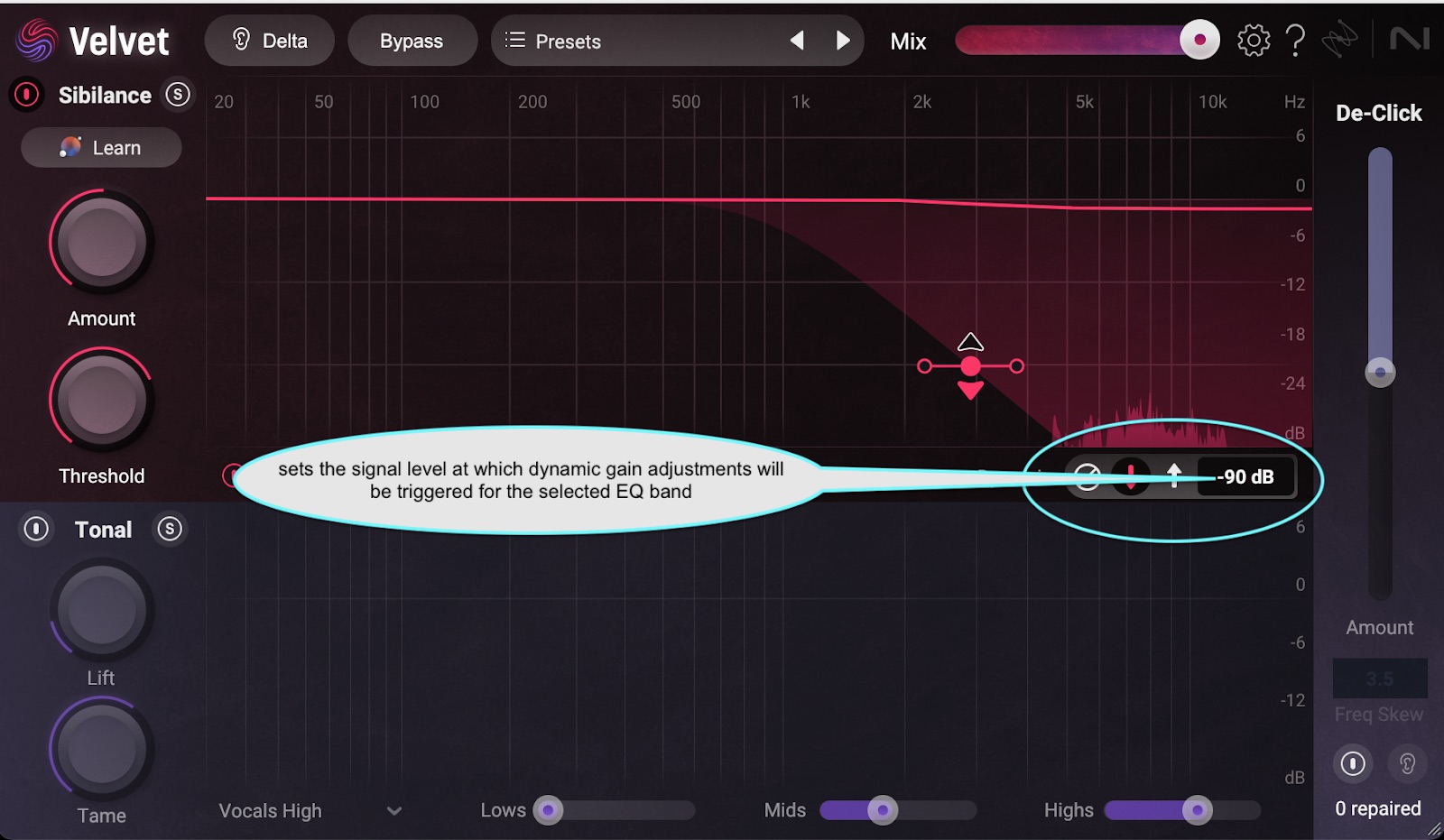
Band-specific threshold settings in Velvet
That’s right, you can tailor the amount of gain reduction for each frequency band you click in.
You can also control whether the band is compressing, expanding, or remaining static. You can add multiple boosts or cuts all across the frequency spectrum. This opens up many new possibilities for curtailing sibilance and harshness.
For instance, some mic/preamp combinations can sometimes experience plosives that are triggered not by plosive sounds, but by wind noise made by sibilance. You can set Velvet to reduce these plosives based on the sibilances.
Let’s take a look at the sibilance section of velvet in action. In this video, we’ll see how Velvet learns and intelligently processes sibilant material.
As for other features, the de-click section does a pretty good job handling mouth clicks, simply minimizing them where needed. Then we have the tonal section, which I like to pitch as “Ozone’s Stabilizer tailored for the human voice.” It’s a spectral, dynamic processor designed to bring more out of your vocal.
You can set a profile that best matches the vocal, use the lift and tame controls to focus on dynamically boosting material, and shape how it responds to low, mid, and high-frequency content with the sliders below.
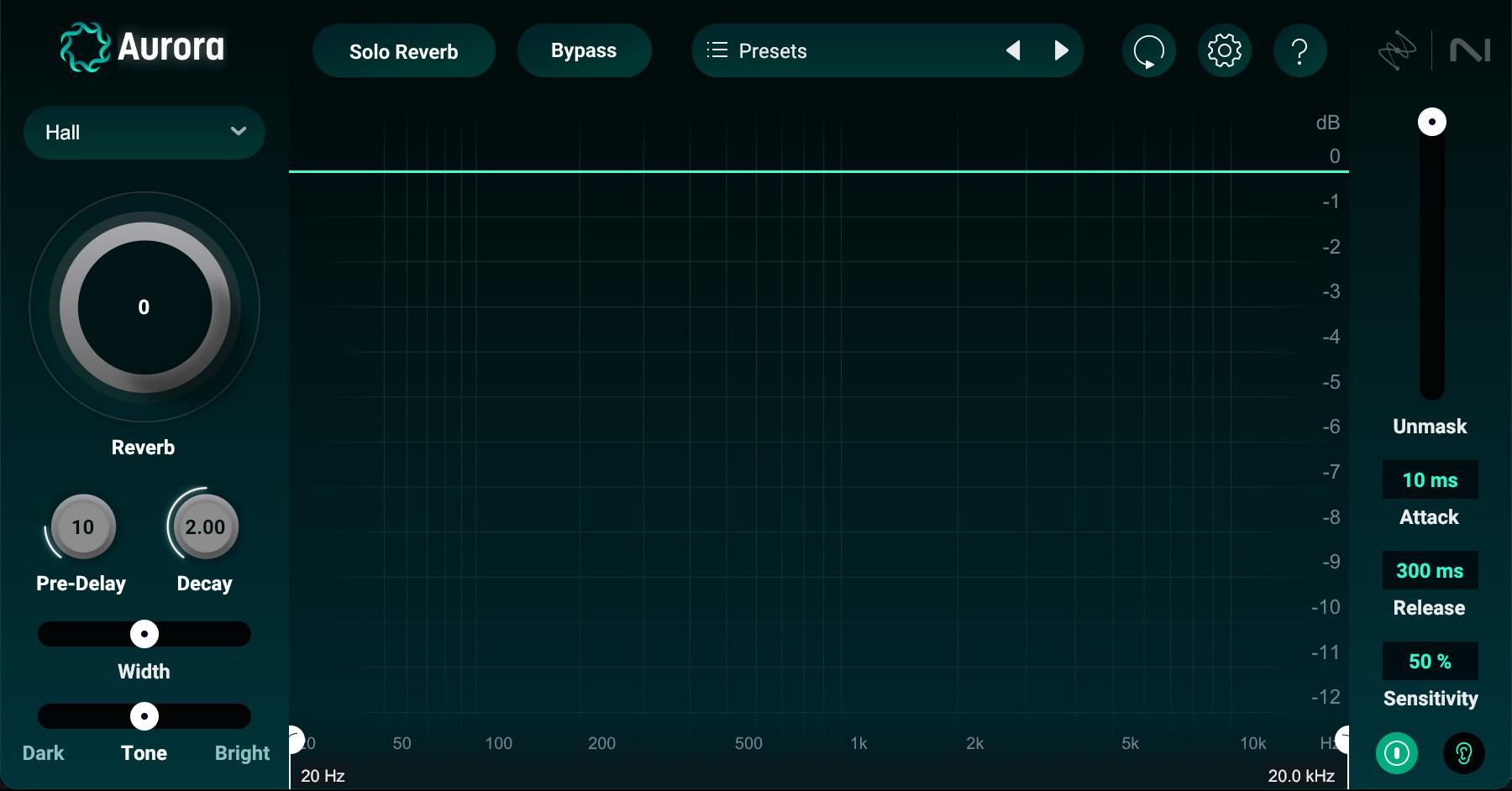
Aurora
In Aurora, built-in spectral unmasking keeps the wet reverb from washing out your dry signal. This makes Aurora perfect for adding the heft of a space without the inherent drawbacks of overuse – namely, a muddy sound.
Observe how we’ll use Aurora on various tracks in this mix to achieve a subtle heightening of space:
The last example is what we’re adding to the drums. Keep in mind that I boosted the Delta signal by 30 dB so you could hear it better. In the mix, it’s more of a feel thing.
By all means – use Aurora for dramatic, standout reverb throws. Its plate and its hall are particularly suited for that purpose. The versatility and tweakability makes Aurora a no-brainer for either scenario.
Plasma saturation plugin
Plasma is a saturation plugin that applies tube-like saturation in a spectral manner. In this case, you can think of spectral as meaning “multiband functionality without crossovers – and thus, without needless distortion.”

Plasma on drums
Distortion without distortion? Why? Because this plugin can give you something quite different from other tube-influenced processors:
Plasma is fantastic at achieving the holographic subtleties of tube processing. It’s the rare plugin that achieves an analog-style result without modeling a particular analog effect. It can also be used for frequency emphasis, but in a way that is less linear and more exciting than EQ.
Here’s how we’ll use it on a drum bus:

Plasma in action
Observe these three examples. You can hear how Plasma livens up these drums, and you can hear exactly what Plasma is doing with the Delta signal.
Cascadia delay plugin
Cascadia, the first delay plugin in the Catalyst Series, provides clean echoes that can add both drama and a sense of space, doing so with a similar GUI to others in this lineup. You can sync delays to the host tempo, go by milliseconds, add wide ping-pong effects, and bring in modulation. All of this is coupled with the same spectral unmasking tools found in Aurora.

Cascadia
Observe this rousing rock chorus, once without Cascadia on the lead guitar solo:
And now with:
This simple delay really helps the guitars, yet the delay never becomes overpowering.
As with Aurora, you can also use Cascadia to create a sense of space. Here are some drums without Cascadia:
And now, we can hear how a subtle amount of Cascadia can really open the drums up to feel more spacious and spatialized.
Subtlety and drama alike – and all achieved quickly.
Philosophies of the Catalyst Series
Catalyst plugins follow a specific philosophy, one centered around user-friendliness, quick results, and impeccable sonics. If you need quick, creative solutions that deliver stellar results devoid of mud and obvious artifacts, these are the plugins for you.
Clean, ergonomic GUIs
Each Catalyst plugin utilizes a sleek interface, laying out easily-understandable controls in a sensible manner. The intricacies of Neutron, Ozone, Nectar, and RX all have their place – but you won’t find stacks of tweakable modules here. Instead, you’ll get one powerful effect per plugin, with just the right number of parameters to achieve quick, creative, and clean results.
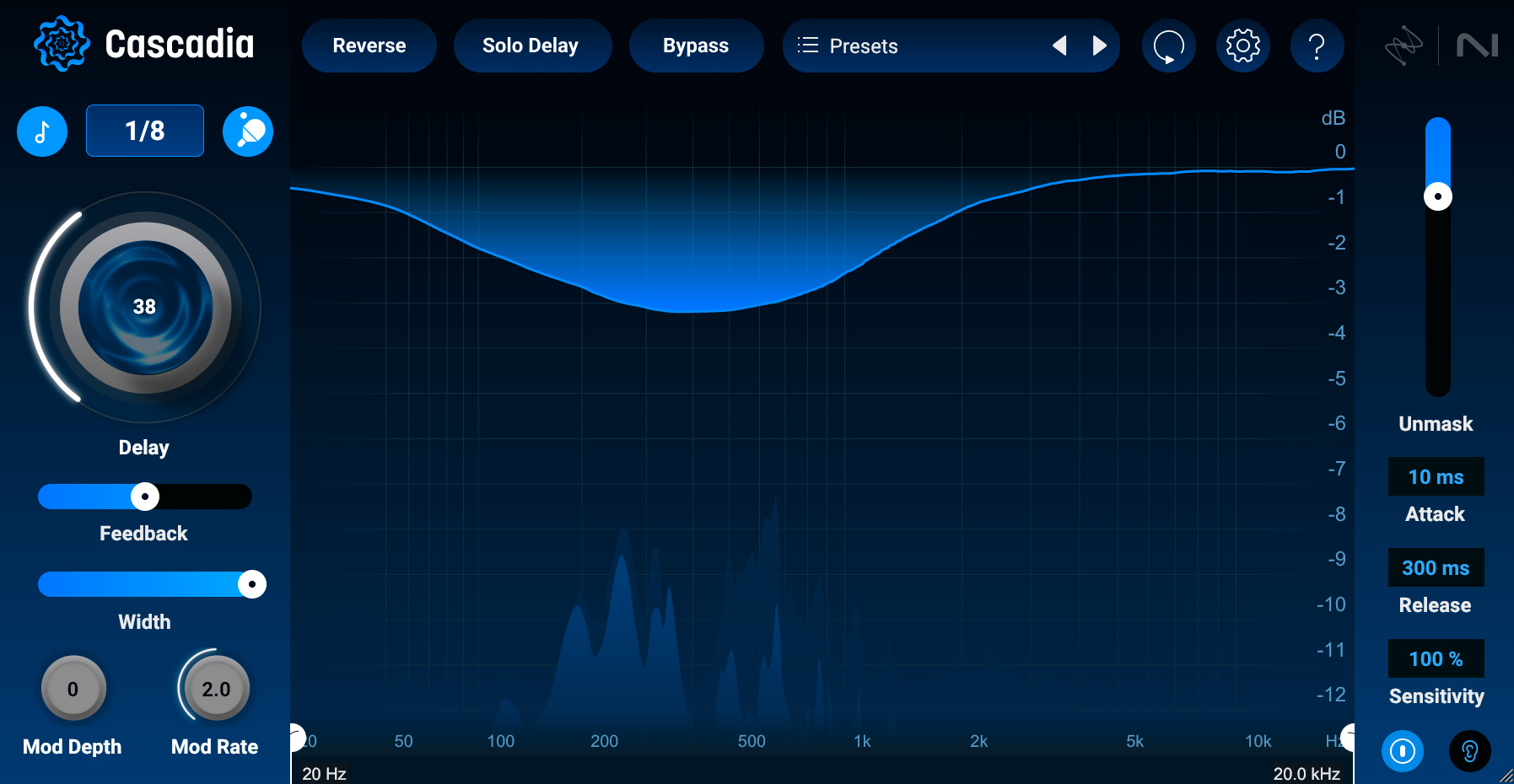
Cascadia delay plugin user interface
As you can see, a Catalyst interface is free from clutter. Its straightforward appearance lets you focus on – and manipulate – sound with greater ease.
Easy to use without skimping on sound quality
A Catalyst reverb like Aurora doesn’t have an RT60 knob or complex frequency-multiplier parameters with selectable crossovers. Instead, common-sense controls allow you to tailor the verb to your exact liking within seconds: make it as long, short, narrow, wide, bright, dark, and loud as you want, doing so with pristine, yet useful algorithms (hall, chamber, room, plate, ambiance, and cathedral).
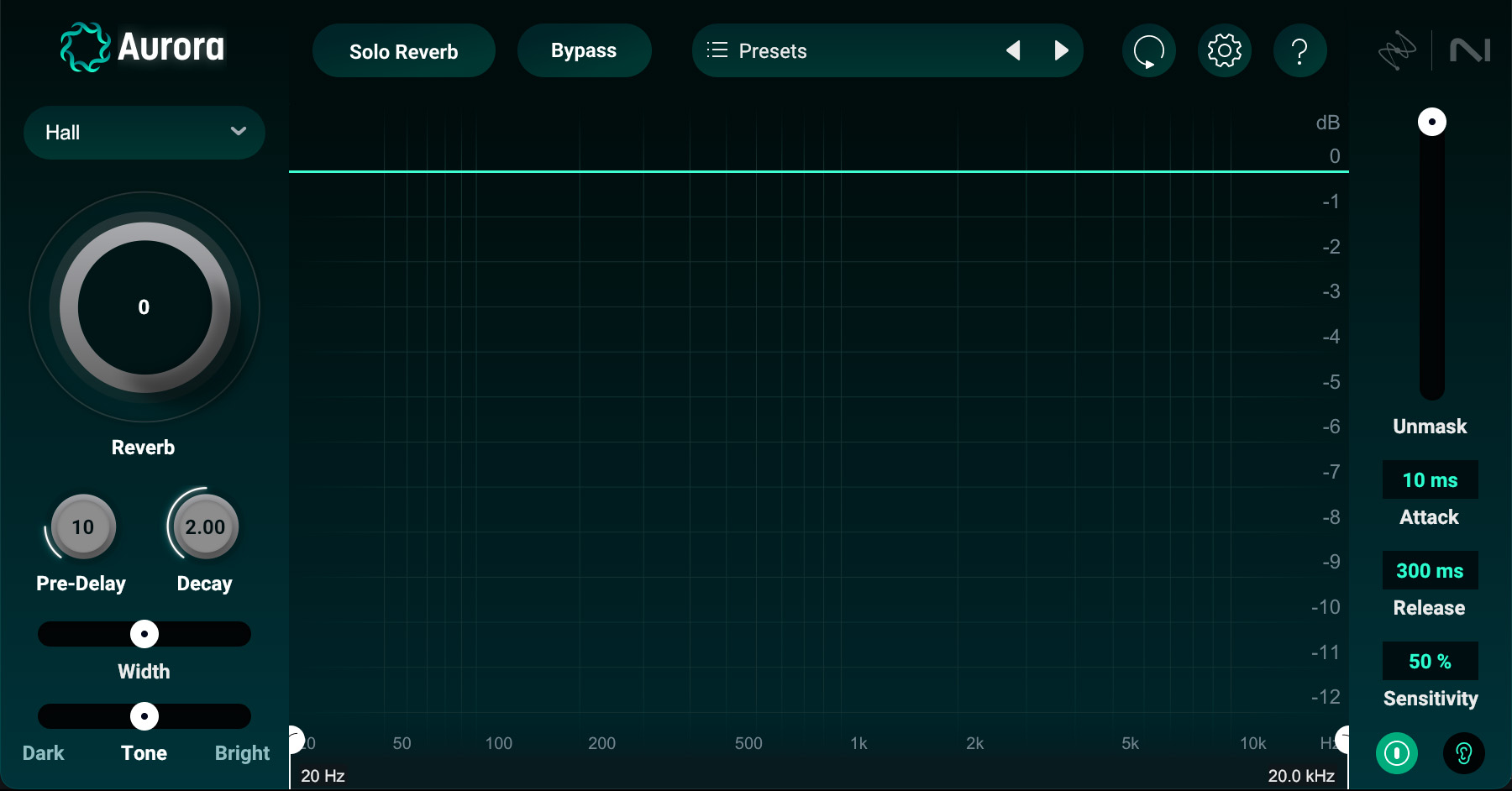
Aurora reverb plugin
Similarly, a Catalyst multiband saturator like Plasma won’t trip you up with artifacts from crossovers as it saturates your sound in its frequency-specific way. You get a unique sound with easily controllable results.
This will continue to hold true as other Catalyst plugins are developed and released. The interfaces will not confuse you, the results will not get away from you, and the sonics will continue to impress.
Catalyst plugins bring their own unique flavor to a project, making them irreplaceable tools in your collection.
For pros and beginners alike
These tools are sure to benefit all kinds of audio denizens, from the pro mixer to the beginner producer.
Newbies need tools that won’t steer them in bad directions. It helps if the tools can teach them something about the craft as well. Catalyst Series plugins provide both sides of the coin: sonics that punch well above their weight, and tools that instruct you on the finer points of frequency balance.
Like beginners, pros need tools that won’t steer them in bad directions. But pros have the experience to identify bad directions more quickly and not waste time on them. Indeed, speed is paramount to the pro: a faster turnaround means more work – as well as a better work/life balance.
Here Catalyst delivers in spades. The sonics are more than enough for both surgical applications and character work. And, for the professional, the ease of use translates into speedy results. We challenge you to keep a Catalyst plugin right next to your usual verb, delay, or saturation plugin in your template. We bet you’ll be surprised.
And one of the best parts about this series: these are tools designed to get you where you need to go without breaking the bank.
Dive into the Catalyst Series today
More catalyst plugins are sure to follow, but these three make a broad mission state for what a Catalyst-series plugin can do. Download any one of these today to see how they’ll benefit your mixes.
